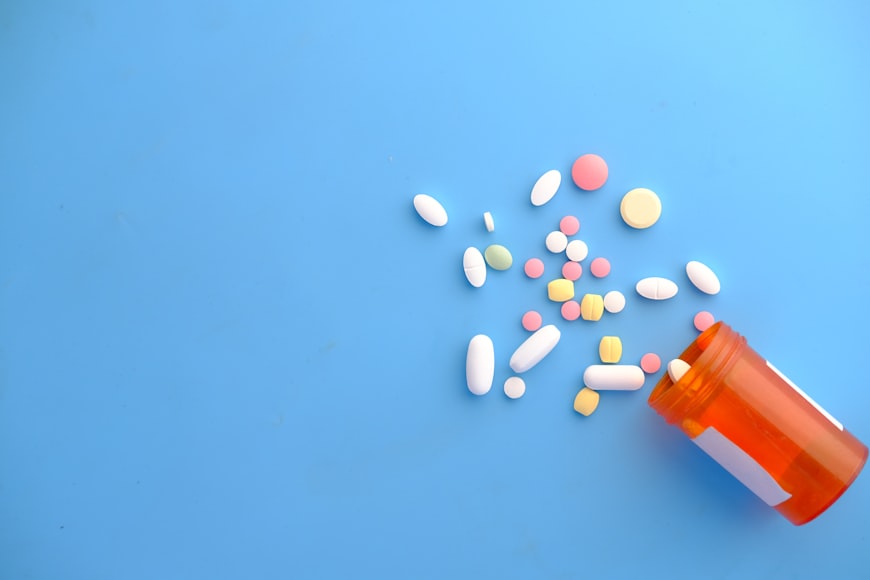Understanding Yeast Infection: Causes, Symptoms, and Treatment Options
Yeast infections are a topic that often evokes discomfort and silence, yet they are a common condition that affects numerous women at some point in their lives. It is crucial to bring this issue out of the shadows and promote awareness, understanding, and empowerment. In this blog post, we embark on a journey to demystify yeast infections, providing you with the information you need to navigate this pesky condition confidently.
By shedding light on yeast infections, their causes, symptoms, treatment options, and preventive measures, we hope to empower you to approach this topic with confidence. Let us break the silence, foster open discussions, and promote a healthier, more informed society when it comes to women's health.
What is a Yeast Infection?
A yeast infection, also known as candidiasis, is a common fungal infection that affects various parts of the body, most commonly occurring in women's genital areas. The primary culprit behind yeast infections is an overgrowth of a specific type of yeast called Candida, most often Candida albicans.
Candida is a naturally occurring microorganism that exists in small amounts in the body, particularly in the vagina, mouth, and digestive tract. Under normal circumstances, the body's natural balance of bacteria and yeast keeps Candida in check. However, there are different factors that can disrupt this balance, which leads to the development of infection and yeast overgrowth.
Yeast infections can occur in both men and women, although they are more prevalent in women. When it comes to women, vaginal yeast infections are the most common form. These infections can be triggered by hormonal changes, antibiotic use, weakened immune systems, uncontrolled diabetes, pregnancy, and other factors.
Unmasking the Symptoms: Recognizing a Yeast Infection
Yeast infections can be uncomfortable and disruptive, but recognizing the symptoms is crucial for prompt diagnosis and treatment. While symptoms may vary from person to person, there are common indicators that can help you identify a yeast infection. By understanding these signs, you can take proactive steps toward seeking appropriate care and finding relief.
1. Vaginal Itching and Irritation
One of the most prevalent symptoms of a vaginal yeast infection is persistent itching and irritation in the vaginal area. It may feel intensely itchy, causing discomfort and a constant urge to scratch. This itching is often accompanied by redness and inflammation of the vulva (the external genital area).
2. Abnormal Vaginal Discharge
Another common sign is an abnormal vaginal discharge. The discharge associated with a yeast infection is typically thick, white, and has a texture similar to cottage cheese. It may have a distinct odor, although it's important to note that yeast infections typically do not have a strong odor like some other vaginal infections.
3. Burning Sensation and Discomfort
Many individuals with yeast infections experience a burning sensation, particularly during urination or sexual intercourse. This discomfort can range from mild to severe, making these activities unpleasant or even painful.
4. Swelling and Redness
The vulva, which includes the outer lips (labia majora) and inner lips (labia minora), can become swollen and red in the presence of a yeast infection. This inflammation is often accompanied by a general feeling of discomfort or soreness in the genital area.
5. Rash and Soreness in Skin Folds
For yeast infections that occur in skin folds, such as beneath the breasts or in the groin area, a rash may develop. The affected skin can become red, itchy, and sore, causing discomfort and sensitivity.
It's important to note that while these symptoms are characteristic of yeast infections, they can also be caused by other conditions. If you're experiencing any of these symptoms for the first time or if they persist despite home remedies or over-the-counter treatments, it's recommended to consult a healthcare professional for an accurate diagnosis.
By recognizing the symptoms of a yeast infection, you can take proactive steps to seek appropriate treatment. Effective management of yeast infections can alleviate discomfort, promote healing, and restore balance to your body.
Root Causes and Risk Factors: Peering into the Culprits
Understanding the root causes and risk factors associated with yeast infections can provide valuable insights into why they occur and who may be more susceptible. While Candida overgrowth is the primary cause of yeast infections, several factors contribute to its occurrence. Let's explore these culprits:
1. Antibiotic Use: Antibiotics are designed to eliminate harmful bacteria, but they can also disrupt the beneficial bacteria that help keep yeast in check. This disturbance in the natural balance of microorganisms can provide an opportunity for Candida to multiply and cause an infection.
2. Hormonal Changes: Fluctuations in hormone levels, particularly during pregnancy, menstrual cycles, or menopause, can create an environment that favors yeast overgrowth. Estrogen, in particular, can influence the balance of microorganisms in the vagina, making it more prone to infection.
3. Weakened Immune System: A weakened immune system due to conditions like HIV/AIDS, certain autoimmune disorders, or prolonged use of immunosuppressive medications can increase the risk of developing yeast infections. The immune system plays a crucial role in regulating the growth of Candida, and when compromised, it may struggle to keep it in check.
4. Tight or Irritating Clothing: Wearing tight-fitting, non-breathable clothing, such as synthetic fabrics or underwear made from nylon or polyester, can create a warm and moist environment that encourages yeast growth. Additionally, the use of scented products, douches, or feminine hygiene sprays can irritate the vaginal area and disrupt the natural balance, increasing the risk of infection.
5. Prolonged Moisture and Warmth: Moisture and warmth provide an ideal breeding ground for yeast. Spending extended periods in wet bathing suits or sweaty workout clothes can create a conducive environment for yeast overgrowth, especially if proper hygiene measures are not followed.
6. Sexual Activity: While yeast infections are not classified as sexually transmitted infections, sexual activity can disrupt the natural balance of microorganisms in the vaginal area. Intercourse may contribute to the introduction of new bacteria and disrupt the pH level, potentially increasing the risk of yeast infections.
7. Uncontrolled Diabetes: High blood sugar levels associated with uncontrolled diabetes can create an ideal environment for yeast to thrive. Yeast feeds on sugar, and elevated glucose levels can contribute to increased yeast growth, making individuals with diabetes more susceptible to yeast infections.
8. Oral Contraceptives: Some studies suggest that certain types of hormonal birth control methods, such as oral contraceptives, may increase the risk of yeast infections. The hormonal changes caused by these contraceptives can alter the vaginal environment and promote yeast overgrowth in susceptible individuals.
It's important to note that while these factors increase the likelihood of yeast infections, they do not guarantee their occurrence. Many people may experience yeast infections without any identifiable risk factors. Each individual's susceptibility is unique, and multiple factors can interact to contribute to the development of an infection.
By recognizing these root causes and risk factors, individuals can take proactive steps to minimize their chances of experiencing yeast infections. Adopting preventive measures, maintaining good hygiene, wearing breathable clothing, and managing underlying health conditions can significantly reduce the risk and promote overall vaginal health.
Breaking the Cycle: Treatment and Management
When faced with a yeast infection, effective treatment is crucial to alleviate symptoms, promote healing, and prevent recurring infections. Fortunately, several treatment options and self-care practices can help break the cycle of yeast infections. Let's explore these approaches:
1. Antifungal Medications
The primary treatment method for yeast infection is Antifungal medications. They come in various forms, including creams, ointments, suppositories, and oral tablets. Over-the-counter (OTC) antifungal creams and suppositories, such as clotrimazole or miconazole, can be effective for uncomplicated infections. For more severe or recurrent infections, a healthcare professional may prescribe stronger antifungal medications. It's important to follow the recommended treatment duration and instructions for optimal results.
2. Natural Remedies
Some individuals prefer natural remedies to complement or as an alternative to conventional treatments. Options like tea tree oil, coconut oil, yogurt, and garlic have been used to manage yeast infections. While these remedies may have anecdotal support, scientific evidence for their effectiveness is limited. It's crucial to consult with a healthcare professional before using natural remedies to ensure they are safe and suitable for your situation.
3. Self-Care Practices
In addition to medication, self-care practices can support the treatment and management of yeast infections. These include:
- Good Hygiene: Keep the affected area clean and dry, but avoid excessive washing or using harsh soaps that can disrupt the natural balance. Opt for mild, unscented cleansers and gently pat the area dry after bathing or using the restroom.
- Avoid Irritants: Steer clear of irritants such as scented products, douches, or feminine hygiene sprays that can upset the vaginal environment and promote yeast overgrowth.
- Wear Breathable Clothing: Choose underwear made from natural, breathable fabrics like cotton and avoid tight-fitting clothing. This helps to keep the genital area dry and allows airflow, reducing the conditions favorable for yeast growth.
- Probiotics: Probiotics containing Lactobacillus strains may help restore the natural balance of bacteria in the vagina. The application can be done topically or you can take them orally. However, more research is needed to determine the optimal strains, dosages, and effectiveness for yeast infections.
4. Lifestyle Adjustments
Certain lifestyle factors can influence yeast infections. Consider the following adjustments:
- Manage Blood Sugar Levels: If you have diabetes, maintaining stable blood sugar levels through proper medication, diet, and lifestyle choices can help prevent recurrent yeast infections.
- Practice Safe Sex: While yeast infections are not considered sexually transmitted, using condoms and practicing good sexual hygiene can help reduce the risk of introducing bacteria or disrupting the vaginal flora.
5. Prevention
Preventing yeast infections is an essential aspect of breaking the cycle. Implement the following preventive measures:
- Maintain good hygiene and avoid excessive douching, as it can disrupt the natural balance of the vagina.
- Change out of wet bathing suits or sweaty clothing promptly.
- Opt for breathable cotton underwear and avoid tight-fitting pants or underwear that can trap moisture.
- If you require antibiotics, discuss with your healthcare professional about potential preventive measures to reduce the risk of yeast infections.
- A well-balanced diet, regular exercise, adequate sleep, and stress management contribute to overall immune health and may indirectly reduce the risk of yeast infections.
If you experience recurrent or persistent yeast infections, it's advisable to consult with a healthcare professional. They can assess your situation, identify underlying causes or contributing factors, and provide personalized recommendations or treatments to address the issue effectively.
By combining appropriate treatment options, self-care practices, and preventive measures, you can break the cycle of yeast infections.
Conclusion
Yeast infections need not remain a taboo subject. By shedding light on this prevalent condition, we enable individuals to break free from the stigma and take control of their well-being. Armed with comprehensive knowledge of yeast infections, their symptoms, causes, treatment options, and preventive measures, we hope to empower readers to approach this topic with confidence, fostering open discussions and promoting a healthier, more informed society.
Remember, each individual's experience with yeast infections may vary, and seeking professional advice is important, especially in cases of recurrent or severe infections. With the right knowledge, treatment, and proactive measures, you can take control of your vaginal health and enjoy more comfortable and balanced well-being.







Comments
Post a Comment